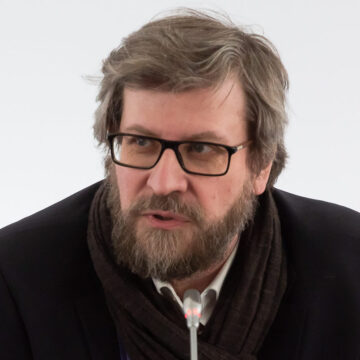For citation, please use:
Lukyanov, F.A., 2022. A World without Borders. Russia in Global Affairs, 20(3), pp. 5-8. DOI: 10.31278/1810-6374-2022-20-3-5-8
The entire history of international relations comes down to the establishment of borders and attempts to overcome them, both literally and figuratively. There has not been a single century when borders stayed intact, at least in areas where international politics was concentrated at that moment. And of course, the redrawing of dividing lines has never been without the use of force, sometimes on a very large scale.
The end of the 20th century gave the impression (or one may say the illusion) that geopolitical common practice had changed. The past century itself was extremely turbulent and exhibited every possible way for changing country borders, ranging from world wars to world decolonization, with the emergence of dozens of new states. By the 1970s, however, a relative balance took place. Colonial empires came to terms with the new state of things. Europe, which was at the heart of political tension, came to an agreement embodied in the Helsinki Final Act. Essentially, it was about the division of spheres of influence between the USSR and the United States, with the recognition of existing borders, both formal (national) and informal (political).
The second part contained a nuance: Moscow’s consent to Basket III, that is, general humanitarian principles, opened a loophole into political borders. It played a prominent role in subsequent processes, particularly in aggravating the crisis of the Soviet system. The latter, without a doubt, fell victim to its own problems, but there was also an external catalyst that spurred internal civic activity.
Those accords marked an important milestone in formulating the rules of the game. The parties essentially agreed not to seek to change national borders in a classical way by force. Instead, the confrontation evolved into attempts to shift invisible mental and ideological borders. The United States and its allies proved much more successful in doing that. The period at the end and after the Cold War was a time when the West massively spread its ideological influence to former opponents. National borders also changed, but more moderately than one could have expected, given the scale of global transformations, and with relatively limited violence.
Those few decades produced the opinion that political geography would no longer change, no matter how strange the existing borders were from a historical or strategic point of view. However, one important circumstance was overlooked. Agreements on the inviolability of dividing lines were concluded at a time of a more or less stable balance of power. The end of the Cold War eliminated it, which could not but shake the entire system of agreements. The alignment of forces was not static: it began to change from the West’s total dominance to a situation involving a much greater variety of influences, but the overall framework remained unchanged—the Helsinki principles.


But the European principles agreed upon in the last quarter of the 20th century did not work globally, including with regard to borders. The result was a heady mix of different standards of behavior that denied each other. And all this was happening in one and the same geopolitical space.
Anyhow, the previous system stopped working. What we are seeing in 2022 shows that the problem of borders is coming back in its most classical version. Russia is trying to solve the problem of mental and ideological borders by changing territorial ones. The United States has completely muddled the Taiwan issue. The crafty compromise of the 1970s with the recognition/non-recognition of Taiwan could only work in a situation where the interests of the parties were clearly defined. But the balance has collapsed, and the problem has come to the fore in the most dangerous form, exposing flagrant duality in the interpretation of the political and legal status of an extremely important territory. The first case (Russian) has already led to an armed conflict, the second one (American) is heading in the same direction.
Today some are already calling (albeit quietly yet) for a new conference on security similar to the Helsinki one, suggesting that it is time to work out new rules. The idea is understandable and obvious, but it does not look feasible at this point. The Helsinki Accords did not establish the status quo but formalized it. Now there is nothing to formalize as everything is shifting. The Helsinki Accords covered a large—Euro-Atlantic—but nevertheless limited area.


So, it is not clear, even methodologically, how all of them can be taken into account. Created in accordance with the decisions of 1975, the Commission on Security and Cooperation in Europe (CSCE, later OSCE) was modeled after international regulatory institutions that were in their heyday back then. Now all of them are in decline, and no new ones are emerging. And, of course, there was a desire for pacification at that time, which is nowhere in sight today, as emphasis is now placed on the use of force to achieve one’s goals.
The conclusion is simple: there are no magic recipes. The world is in an extremely dangerous phase, which requires all major actors to be as prudent as possible and clearly understand the consequences of their actions. The international system will have no other forms of existence in the foreseeable future. All countries say this but continue to act as they see fit. So, apparently, we do not apprehend the danger in real earnest yet. Time to realize—before it is too late.










